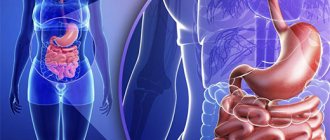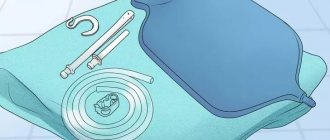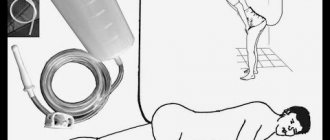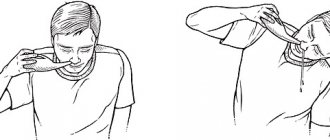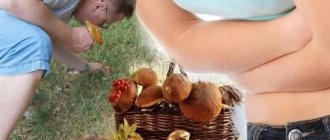How much water is needed
The amount of water for a cleansing enema should be age-appropriate. Here are the basic recommendations for selecting the volume of water:
- For a newborn – 30-40 ml;
- Infant up to 6 months – 50-60 ml; c
- Infants up to 8 months – 60-100 ml;
- Children under 1 year old can take a volume of 120-130 ml;
- At 2 years of age, you can take liquids up to 200 ml;
- Children under 4 years old – 250-300 ml;
- For a child 6 years old – 350 ml.
- At primary school age (up to 9 years) – 400 ml.
- But upon reaching 10 years old, you can already take at least 500 ml.
For an enema, use bottled or regular water (boil first). The temperature of the liquid for a newborn and infant should be no higher than 260C and no lower than 220C. Toxic substances accumulated in the intestines during constipation quickly dissolve in too warm water and are absorbed directly into the bloodstream. Cold water can provoke spasms, causing discomfort.
The temperature of the cleaning solution should be selected depending on the reasons that caused constipation. In case of poisoning, it is necessary to block the absorption of toxins from the colon - take water at 18-200C. For a laxative effect, you should take water at 22-260C. If constipation is spastic, then increase the temperature to 28-320 C.
In what cases should an enema be used for children 2-3 years old?
An enema for children with constipation is sometimes the only option to combat constipation. It is used when tablets, solutions and other laxatives and cleansers have not proven to be sufficiently effective.
The advantage of any enema is its direct effect on the intestines, as well as the gentle and rapid removal of feces. That is why many parents prefer to use them, replacing standard options with microenemas. However, before engaging in such treatment for constipation, it is strongly recommended that you familiarize yourself with the contraindications and precautions.
How to prepare the solution correctly
Enemas are given to children with 4 types of solution:
- A cleansing enema for children washes the area of the colon and frees it from masses of stagnant feces, eliminating constipation;
- Oil – quickly eliminates symptoms of constipation, suitable for newborns;
- Medicinal – ensures rapid absorption of the drug through the walls of the large intestine;
- Siphon - such an enema is used to cleanse the rectum of the accumulation of feces through repeated infusions of the solution.
Please note how to properly prepare cleaning solutions at home.
Cleansing for constipation
The main purpose of a cleansing enema is to free the intestines from feces and waste formations. Read the instructions on how to give an enema to your child. Study the recipes for basic solutions used for enema:
- Hypertonic – eliminates toxic substances and waste. For constipation, this type of fluid is given to the child. To prepare, take 220 ml of water, add 1/2 teaspoon of table salt and boil. Use only when the solution reaches the desired temperature, that is, cools down. For a child from 0 to 2 months, the concentration of the hypertonic solution is halved. To do this, reduce the mass of salt by half.
- Chamomile decoction is used both as a cleansing enema and an antipyretic. To prepare the decoction, take 1 tbsp. spoon of flowers, pour 250 ml of just boiled water and leave for 1 hour. Then filter and bring to the desired temperature. In a cleansing enema, you can mix chamomile decoction and a hypertonic solution to achieve a laxative and disinfecting effect. At the same time, salt and chamomile are added to such a solution. The salt must first be boiled.
- Oil enema – has a laxative effect. Use olive or sunflower oil. To disinfect, the oil should be boiled for about 20 minutes using a water bath. Then cool; the temperature cannot exceed 39 0C when using.
Any solution filled with an enema helps cleanse the intestines.
Medicinal for fever
Is it advisable to give your baby an enema to bring down the temperature? The answer is definitely yes - in this condition the child can have an enema. It is better to choose a solution made from chamomile decoction. It is necessary to make the temperature of the liquid 1 degree lower than body temperature.
Using an analgin solution will help get rid of fever, accompanied by chills and fever.
You can give medicinal enemas only when medicinal methods of reducing the temperature have been exhausted. Analgin solution is prepared by mixing 50 ml of water with 1 ml of analgin. Without consulting a doctor, you can give an enema with analgin only 1 time, when traditional medications have not helped.
With garlic for worms
Garlic enema is a dubious option for getting rid of worms. Many parents are interested in how to give their child an enema that can expel parasites. This method is effective in the case of enterobiasis; it clears worms only in the lower parts of the intestine, when the parasites descend there to lay eggs.
Garlic liquid is prepared by brewing 4 or 6 cloves of garlic, which should be cut lengthwise and boiled in 250 ml of water or milk. Milk has enveloping properties, therefore it protects the intestinal mucosa.
Parents need to take into account that such anthelmintic cleansing is quite effective at home, but is difficult in terms of the behavior of the procedure itself.
To completely cleanse the intestines, you must repeat the procedure daily for 2 weeks. Think about whether the baby can endure a series of similar bullying.
If constipation is very severe, what should I do?
Unfortunately, constipation occurs not only in adults, but also in children.
This problem is especially relevant between birth and one year of age. After all, at this time the baby’s microflora is not yet fully developed, capable of maintaining normal digestion. Therefore, constipation often accompanies the first months of life. An enema for a newborn with constipation is the best way out of the situation. It helps to evacuate stagnant feces from the large intestine. But all young parents should remember the main rule: no action without consulting a doctor! You need to be sure that the constipation condition is not caused by any pathological process. After all, pain in the abdominal area in infants and older children can occur due to inflammation of appendicitis, volvulus, pinched hernia and other equally dangerous diseases.
By the way, we would also like to recommend another remedy for constipation for children - Bebicalm. This remedy is safe and can be used for treatment from the first days of a baby’s life.
Having passed through infancy, reaching two to three years, the baby already eats vegetables and fruits - that is, fiber. He is actively moving. Therefore, constipation at this age is much less common than in infancy. The norm for a two- or three-year-old child is 6 bowel movements per week. If you have less frequent stools, you should consult a doctor to find out the cause. If all possible pathologies that are dangerous to the health and life of the baby are excluded, the doctor may prescribe an enema.
Recipes, menus and diet products
Greetings to all readers of my blog. In medical practice, enemas have been used for a very long time, both in adults and children. As already mentioned, the purpose of this procedure may vary. On the one hand, various medications are well absorbed through the rectal mucosa. On the other hand, for one reason or another, it may be necessary to artificially cleanse the intestines. One of these reasons is constipation.
How does this procedure work for constipation? Water (medicine, herbal infusion) breaks solid stool into small pieces. At the same time, it liquefies it, making it softer and smoother, which allows stool to move more easily through the intestines. In addition, the liquid irritates the receptors of the mucous membrane.
Constipation in babies
I talked about constipation in young children in great detail, so we won’t dwell on this issue for long. It only makes sense to say that in this article the word “newborn” means all the babies from birth to the end of the 12th month of life.
The norms for the number of bowel movements per day are different for each age. So, the original feces (meconium) appears a day after birth. At first, the baby may defecate after each feeding. By six months, the frequency of stool decreases to 3 times, and by a year - to 2 times. However, these figures are very arbitrary. Dr. E.O.
Constipation is considered to be retention of stool in a baby in the first month of life for more than 1 day. And for older children - longer than 5 days if fed only breast milk and longer than 2 days with all other types of feeding. However, if the baby:
- cries constantly;
- pulls the legs towards the stomach;
- shows other signs of anxiety;
- does not gain weight well;
- and his stomach is swollen and tense, the absence of bowel movements for 1 day is “equated” to constipation.
So, all conditions are met, there is a doctor’s prescription, there are no contraindications. Enema for newborns for constipation - how to do it?
First of all, it is important to know: an enema for a newborn - how much water can be introduced into the intestines. Ideally, this figure should be announced by a doctor. However, there are indicative standards. They are formed depending on the age of the baby:
- Newborn babies (1 month of life) can be given no more than 25 ml of liquid.
- Children aged 1-2 months are given 30-40 ml.
- Babies from 2 to 4 months - 60 ml.
- At the age of six months to 9 months, the recommended volume is 75-100 ml.
- Babies 9-12 months old can receive 120-170 ml of liquid.
In cases where not an exact figure is presented, but an interval (for example, from 50 to 100 ml), the volume should be determined by the child’s weight. The larger your sun, the more liquid there should be.
Temperature
In order not to cause harm to the intestinal mucosa, it is necessary to observe the temperature regime. Cold water can provoke vasospasm, which will lead to serious ischemic consequences. And too hot can cause severe burns, which will be very difficult to treat. Intestinal function after them may not be fully restored.
An enema with a temperature of 28-30°C will be optimal for an infant. Under no circumstances should you measure the water temperature by eye; be sure to use a thermometer!
What “device” is used to make an enema for newborns with constipation? Infants and children under 3 years of age receive infusions using a rubber balloon (bulb). The Esmarch mug (“adult” enema) cannot be used due to its large volume and large tip.
Such bulbs (in other words, syringes) can be type A - with a soft tip, and type B - with a hard tip. Their volume ranges from 5 ml (usually used as nasal mucus aspirators) to 270 ml. The choice of the type of pear is up to the parents. However, for babies up to six months it is more acceptable to use soft tips, and after that - hard, plastic ones. Before the procedure, the syringe must be washed and boiled.
Liquid composition
What substance can be used to give an enema to newborns for constipation? The simplest is, of course, water. Water cannot be poured straight from the tap. If you decide to use tap water, it should be filtered and boiled. A good option is to use “baby” water or simply distilled water. It is possible to add glycerin - 1-2 tsp. per glass of water.
It is permissible to do an enema with chamomile decoction (1 tsp of dry herb or 1 filter bag per 200-300 ml of liquid). In addition, it is quite possible to perform an enema with a warmed saline solution (NaCl 0.9%).
Methodology
The enema procedure is as follows:
- Wash the hands.
- Prepare the necessary liquid, a syringe.
- Place an oilcloth on the surface and a diaper on top. The child is laid on his back.
- Treat the tip of the syringe with Vaseline or oil.
- Squeeze the bulb with your hand until all air comes out.
- Draw water from a container prepared in advance by lowering the tip into it and unclenching your hand.
- Lightly press the filled container, holding the tip up, until water appears.
- Fix the child's legs with your left hand in a raised position (it is acceptable to press them to the stomach).
- With your right hand, insert the tip into the rectum using rotational translational movements. If a syringe with a soft end is used, it is inserted completely, while a plastic one is inserted to a depth of 3 (in babies 1 month of age) to 5-6 (in one-year-old babies) cm.
- By slowly and carefully squeezing the bulb, pour the liquid into the intestines.
- Without unclenching the bulb, remove the syringe from the intestine, and immediately after removal, press the child’s buttocks with your hand for 3-4 minutes.
If the procedure is carried out correctly, after unclenching the buttocks, bowel movement should occur. Afterwards, be sure to wash the baby, as well as wash all used tools and carry out wet cleaning.
Frequency
How often can a newborn have an enema? The number of times the procedure can be performed is determined by the doctor. In general, this can be done no more than once a week (and then only when necessary!). The fact is that if an enema for newborns for constipation is used more often, the baby gets used to the fact that he does not have to push. In this case, psychogenic intestinal atony may develop, which is quite difficult to treat.
An enema at home, I must say, is a rather risky “activity”. What complications may arise?
- Mechanical injury. This problem most often occurs when using hard tips. Firstly, the baby may twitch. Secondly, each person has a different intestinal structure. Some have a particularly folded intestine, some have a vulnerable mucous membrane, and some even have a tortuous intestine. In addition, insertion errors are acceptable (incorrect tilt, too much pressure, insufficient Vaseline treatment). Another factor is the presence of roughness on the tip itself, which the parents did not notice. All this can lead to damage to the intestinal mucosa, even to the point of bleeding.
- Overdistension of the intestine. If the mother has overdone the volume of water, the baby’s intestines may stretch too much, which will lead, firstly, to intense pain, and secondly, to worsening atony, if any.
- Infection. Using tap water, poor hand hygiene or syringing, and the presence of microcracks in the intestines or anal area can cause infection. This leads to inflammation, and sometimes even suppuration.
- Burn, vasospasm.
- Intoxication. It would seem, where? However, if the water was too “appropriate” temperature, i.e. warm, it could be absorbed in the intestines. Along with it, toxic products that accumulated in the intestines entered the bloodstream. If there were many of these, complications may develop, including fever, chills, and vomiting.
If previously there was only one option for an enema for newborns for constipation - the one described above, today this is not the case. There are medications available that are specifically designed for this procedure. They are sterilized and pre-packaged in tubes with tips. These include the Microlax enema for newborns.
Microclysters of this brand have several undeniable advantages:
- clearly dosed substances that are safe for children;
- almost instantaneous (up to 10 minutes) action;
- ease of administration;
- the action is strictly local.
Microlax enema for newborns - how to use it? It can be used in children from birth. The instructions do not provide any preparation before use. It is enough to wash your hands, insert the tip of the plastic tube into the child’s anus and squeeze out the medicine. Within a few minutes, bowel movements will occur.
Rules
To properly give your child an enema, you need to take care of preparing the place where the procedure will be performed. A flat horizontal surface should be covered with oilcloth and covered with a clean sheet. The room in which the procedure will be performed should be warm and comfortable.
When choosing a pear, it is important to take into account the age of the child, that is, the size must be appropriate:
- At the age of 4-5 years, you can take a syringe equipped with a plastic or rubber tip. The volume of devices varies in size from 30 ml to 350 ml.
- After 5 years of age, an Esmarch mug with a volume of up to 2 liters, which is equipped with a silicone outlet and a tip made of plastic, is suitable.
You should have Vaseline, a solution prepared in advance, or oil disinfected in a water bath on hand. If an enema is given to a very young child, then it is prudent to place a potty nearby.
How to do an enema - instructions for parents at home:
- When an enema is given to a child under one year old, he should lie on his back. The rest should lie on their left side.
- Fill the bulb with liquid or oil.
- Squeeze the bulb to release excess air.
- Lift the upper buttock and carefully insert the nose of the pear into the anus. For babies 3-5 cm, for older children – up to 7 cm.
- Introduce the contents by slowly squeezing the bulb.
- Without releasing the squeezed bulb, remove the tip. Squeeze your buttocks for half a minute.
- It is necessary for the water to remain in the intestines for a while, this way the maximum effect of liquefying the stool is achieved.
- Typically, emptying occurs after 10 minutes or more.
You should only give an enema alone with your child, without breaking the trust barrier.
How many times can you give an enema?
If suddenly the child does not poop after the enema, then a repeat procedure is allowed after 7 hours. In the second run, make the liquid a little cooler, by 2 degrees. If after the second enema there is no bowel movement, you should put a glycerin suppository - this will definitely cause bowel movement.
The presence of inflammation in the intestines or anal fissures are contraindications for an enema.
The ability to quickly cleanse the intestines during constipation is sometimes convenient for parents, but can disrupt peristalsis. If you do the procedure too often, then bowel movements will not occur without an enema.
▼We RECOMMEND YOU TO STUDY▼
Harm and benefit
If a child cannot empty his bowels on his own, constipation causes discomfort and abdominal pain. An enema not only removes retained feces from the intestines, but also toxins that poison the body. But this procedure should not become regular, since it only alleviates the problem for a while and does not eliminate its root cause.
You can give an enema to a baby and a child over a year old with constipation, provided that all alternative methods have been exhausted, and bowel movement has not occurred.
Abuse of enemas for constipation in infants and older children negatively affects the condition of the intestines, provoking disorders of its activity:
- the formation of dysbiosis as a result of leaching of beneficial intestinal microflora;
- development of “lazy” bowel syndrome due to weakness of its peristalsis;
- development of chronic constipation;
- violation of acid-base balance;
- decreased immune defense.
